Delicious Danish Delights
I'm going to be honest. When my nephew first suggested we go to Denmark, I was reluctant, primarily because of the food. I thought that all the Danish ate was seafood, and while I liked seafood, I was also somewhat choosy when it came to fish and shellfish. So, after I booked our flight and hotel, I researched Danish cuisine...and was pleasantly surprised to the learn that their national dish is not seafood, but pork. My surprise only grew when I arrived in Denmark; I didn't just love their capital city, I also loved their food.
Stegt Flӕsk med Persillesovs
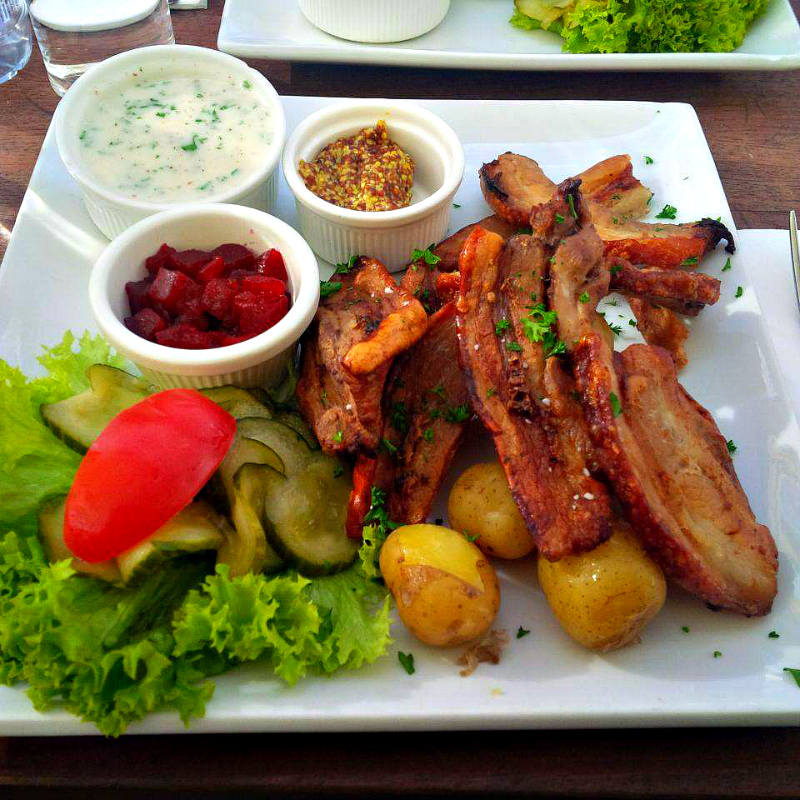
Denmark's national dish consists of fried, uncured pork bacon (stegt flӕsk); potatoes; pickled vegetables; and parsley sauce (persillesovs). The bacon is like neither American bacon nor Canadian/British bacon. Rather, it is thick, crispy, and fatty, with only a small amount of meat on the slabs. It's similar to the Hungarian töpörtyű, the American pork cracklings, or the crispy and fatty skin on the German schweinshaxe; therefore, as a Hungarian, this dish was very familiar to me. The potatoes served alongside the stegt flӕsk are usually boiled, and the parsley sauce that is poured over them is a béchamel-like white sauce, with lots of fresh parsley chopped into it. The pickled vegetables--beets and cucumbers, in my case--cut through the heaviness of the bacon to make stegt flӕsk med persillesovs an absolutely essential and delicious food to try on one's trip to Denmark.
Smørrebrød
While pork bacon may be Denmark's national dish, the open-faced sandwiches that Danes eat for lunch could be called the country's culinary specialty. Smørrebrød comes from the words smør og brød, meaning "butter and bread", so presumably, the original Danish open-faced sandwich was merely buttered bread. Now, however, there are dozens of varieties--from chicken and roast beef to salmon and eel. If you can slap it on a slice of rye bread, I'm sure a smørrebrød exists of it.
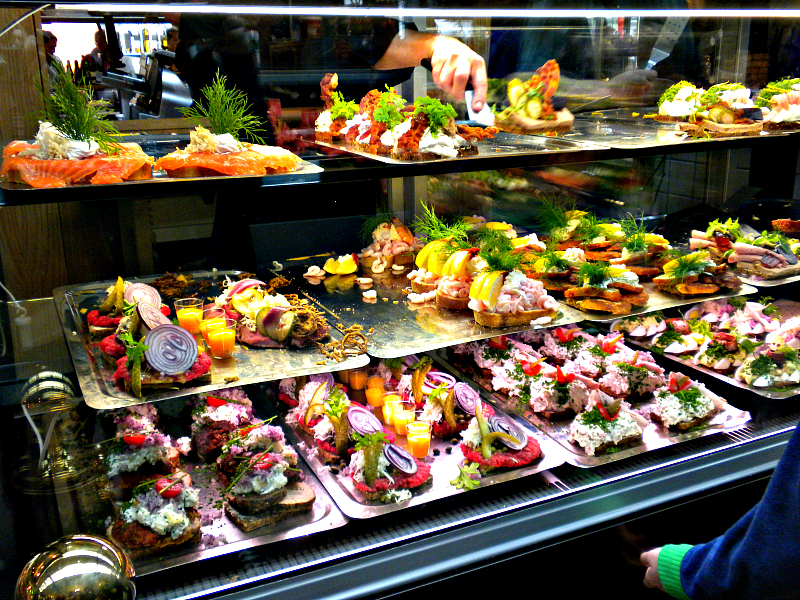
One of the best places in Copenhagen to get smørrebrød is Torvehallerne, the edgy food hall I wrote about in the previous "EuroExperience" article, "The Home of Hans". Choosing just one open-faced sandwich was impossible, so my nephew and I each ate two. Because I joked about going to Copenhagen for the smoked salmon (I love Scottish smoked salmon), I of course had to try the røget laks smørrebrød, which is slices of cold-smoked salmon on bread, topped with dill, grated horseradish, and crème fraȋche. All I can say is "sorry, Scots and Norwegians, but Danish laks is far superior to both Scottish smoked salmon and Norwegian lox." The salmon was buttery and barely fishy, and even if the rest of Danish food had sucked, the trip would have been worth it just for the røget laks smørrebrød.
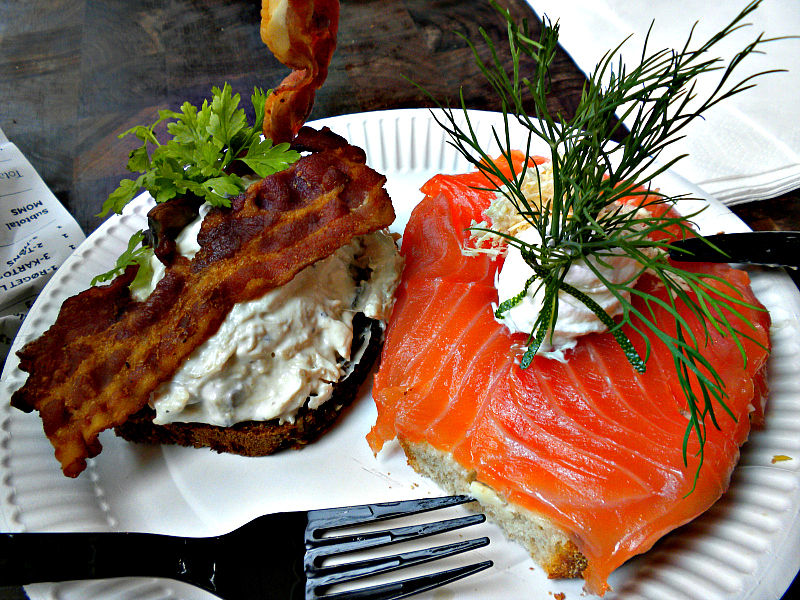
The other sandwich I ate was, surprisingly enough, chicken salad (hønsesalat). I'd never had chicken salad. American chicken salad scares me, but hønsesalat was quite delicious. I think the secret lies in combining the mayonnaise with crème fraȋche, as well as with herbs and spices. And the bacon on top certainly doesn't hurt either.
Torsk
Cod is eaten all over Europe. After all, British fish and chips are often made from cod, while the Spanish eat it in a tomato-based soup. I like cod. It's mild, firm, and weirdly lemony tasting, even without adding lemon to it. Thus, naturally, when I saw battered and fried torsk on the menu in Copenhagen, I ordered it. Because cod is a cold-water fish, it's particularly abundant around Denmark, so I knew mine would be fresh, and it did actually taste better than the cod I had in America's south. It was...lemonier.
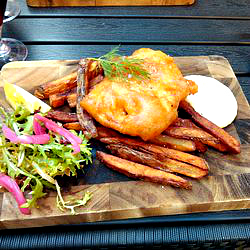
As a side note, many Danes are fond of cod roe, but I'm not keen enough on fish eggs to have tasted it. The nephew, on the other hand, did taste cod roe and liked it, as well.
Fiskeprodukter

Although my belief that Danes only eat seafood was wrong, it does comprise a very important part of their diet. In addition to torsk (cod), they also eat ål (eel), sild (herring), rødspӕtte (plaice), laks (salmon), and rejer (shrimp).
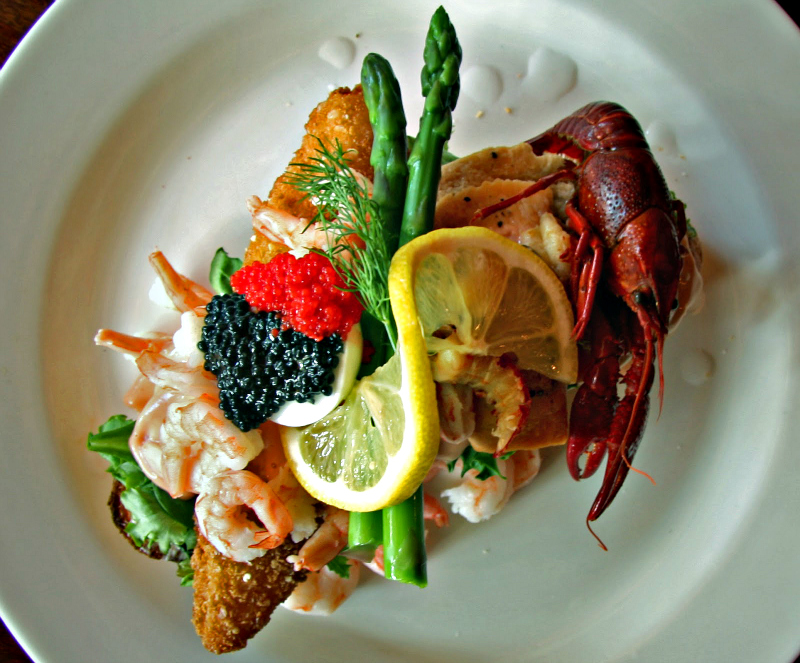
Eel, salmon (salt-cured or smoked), and shrimp are often eaten as smørrebrød, while herring is generally pickled or smoked and plaice is battered and fried. The shrimp found in Denmark differs from that found in tropical waters. Although it is smaller--about the size of one's fingernail--, it certainly packs a flavorful punch.
Frikadeller
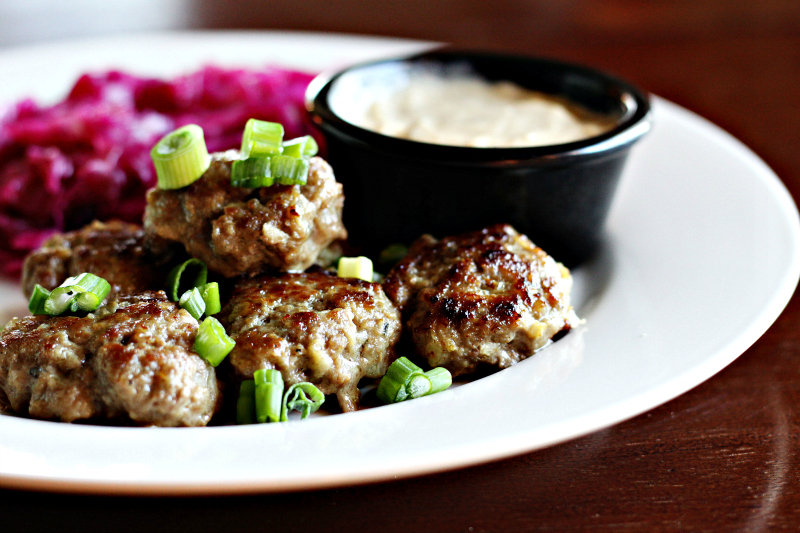
These pan-fried balls of pork (or of veal and pork) are reminiscent of the Hungarian fasírt, one of my favorite Hungarian foods. Ground pork is mixed with chopped onion, as well as a binder (egg, bread crumbs, or soaked bits of bread) and spices (e.g., black pepper). These Danish pork meatballs are usually accompanied by some sort of cabbage, the most popular being either stuvet hvidkål (boiled cabbage in white sauce) or rødkål (red cabbage stewed with sugar, vinegar, apples, and spices).
Høns i Asparges
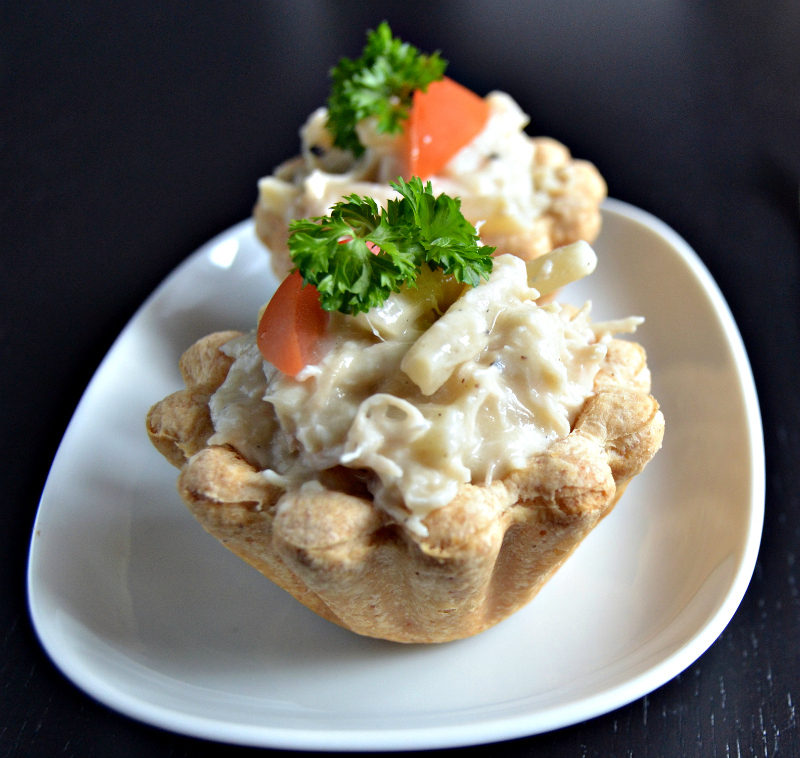
The Danes, like the Dutch, are fond of white asparagus, which is milder than its green cousin. Høns i asparges translates to "hens in asparagus" and consists of boiled hen's meat, flour to thicken the broth, cream, and, of course, chopped asparagus. These ingredients are usually the filling for bite-sized savory tarts or pies, similar to the American chicken potpie. Hens in asparagus is served alongside boiled potatoes and the ubiquitous persillesovs (parsley sauce).
Brӕndende Kӕrlighed
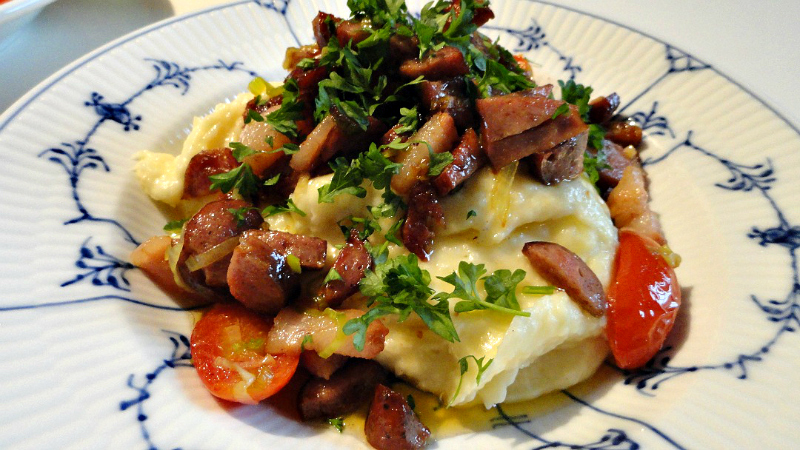
One of my favorite Danish food names and Danish foods, this mashed potato dish literally means "burning love." Why? I have no idea, but it's delicious, and it's certainly not your ordinary mashed potatoes. A crater is made in the mashed potatoes, which is filled with fried bacon and onions. I ate burning love at a gastropub in Nyhavn, accompanied by a craft Danish wheat beer, while giggling immaturely at the name.
Danske Jordbӕr

I'm not a big fan of fruits; one could even say I dislike them. But when I saw these little, ruby jewels of strawberries at Torvehallerne, I couldn't buy them quickly enough. They were just so pretty. They were also the best strawberries I'd ever eaten and tasted almost identical to szamóca, the tiny, sweet strawberries that grow along the edge of forests in Hungary. Danish strawberries are so sweet and so concentrated in strawberry flavor that all other strawberries now pale in comparison. My nephew agreed, and soon, we'd eaten the entire box while strolling the Kongens Have (King's Garden) at Rosenborg Castle.
Risengrød

What would a Danish food article be without rice pudding? A farce, that's what. Rice pudding is one of the quintessential Danish desserts, particularly on Christmas. Served with butter, cinnamon sugar, and nisseøl (a type of sweet white beer), risengrød is believed to be a favorite food of the nisser, the gnome-like, mythological creatures from Nordic folklore that bring gifts on Christmas. So does that mean Danish children leave out risengrød on Christmas Eve, like American children leave out milk and cookies?
Sources:
1. https://en.wikipedia.org/wiki/Danish_cuisine
2. https://en.wikipedia.org/wiki/Tomte






